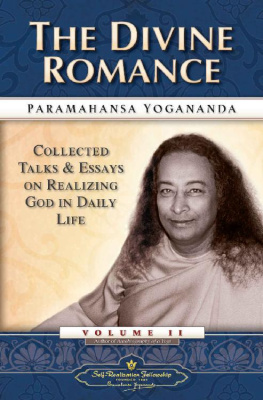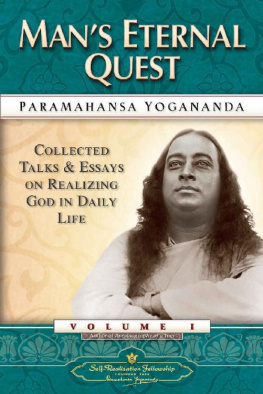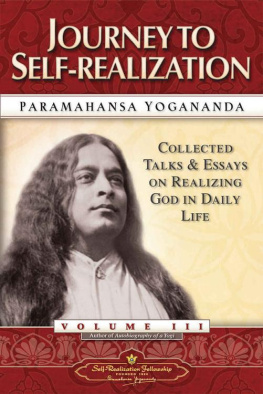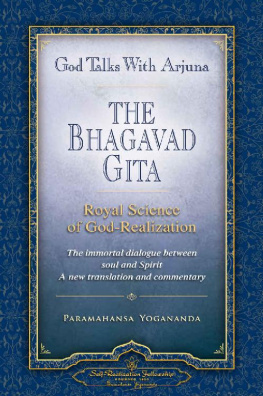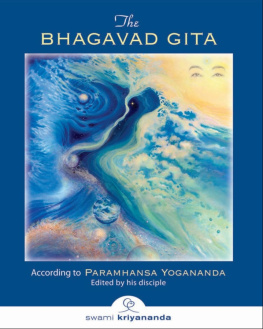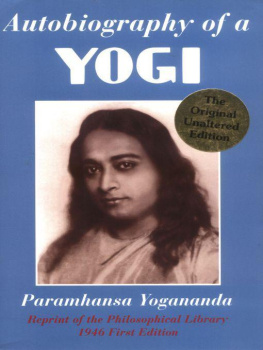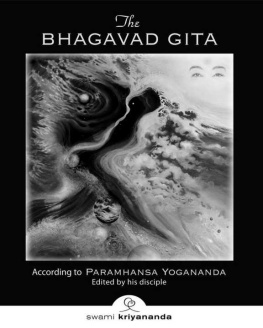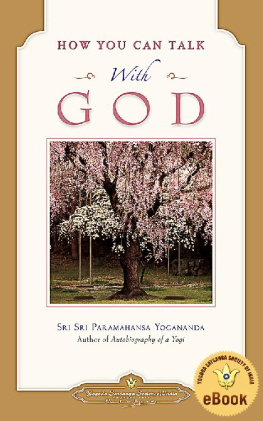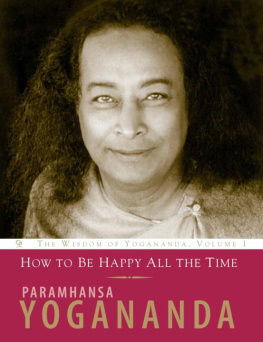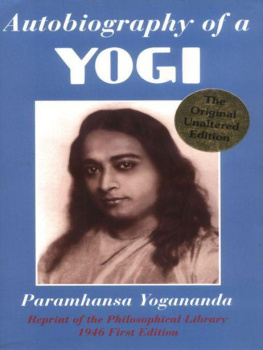Chapter One
What Is the Bhagavad Gita?
The Bhagavad Gita means, The Song of God. It is indeed a song: a work of art, as well as a deep statement of truth. I would, indeed, call it the perfect scripture. I make that statement as a Westerner, raised in the Christian tradition, though now a devout believer in Sanaatan Dharma .
The Gita, as it is lovingly called in India, is the most widely known and best loved scripture in India. Concise, profound, poetic, and deeply inspiring, it has been fittingly called The Hindu Bible, for it is the definitive statement of the ancient religion of that oldest of all countries on Earth.
The truths taught in the Bhagavad Gita are stated with extraordinary clarity. Interestingly, however, because of their very clarity they open up vast vistas of insight. Hence the value of commentaries on it, of which there have been a large number. There are levels of meaning in the Gita for which the Gita is also an allegory. I base the contents of these pages on the commentaries by my great Guru, Paramhansa Yogananda. I was with him in 1950, as I said in the Introduction, at his retreat in Twenty-Nine Palms, California, while he dictated a major part of those commentaries.
Paramhansa Yogananda began his writing by stating that the Bhagavad Gita presents the quintessence of Indias ancient teachings, of which the oldest and most complete are the voluminous Vedas . To understand the Vedas is not easy. As Swami Bharati Krishna Tirtha, the Shankaracharya of Gowardhan Math in Puri, stated, many of their words have changed their meaning over the many centuries since they were first written down. (And they were only written down after the arrival of a lower age, when people could no longer recite the words from memory. The invention of writing was not a sign of civilizations advancement, but of a decline in human awareness that made it necessary to record thoughts in written form.)
Bharati Krishna Tirtha stated that many words of deep meaning have acquired, in time, more superficial meanings. Words do, of course, change. The word, knave, he pointed out, once meant simply a young man, not a bad one. Indeed, knave comes from the German knabe , which means boy. Similarly, then, the word go in ancient Sanskrit meant light, not cow as it does today. Western scholars, taking words like this, have made a hash of the inner meaning of the Vedas.
Only people of deep spiritual understanding can penetrate to the heart of those ancient scriptures. The Brahmin caste, who are supposed to be (but seldom are) deeply versed in the scriptures, often proclaim their traditional scriptural knowledge with names suggestive of their supposed degrees of Vedic scholarship: Chatturveda (four Vedas); Trivedi (three Vedas); Dubey (two Vedas).
A summary of the Vedas is contained in the Upanishads . Even these great scriptures are obscureespecially for modern minds.
The quintessence of the Upanishads , again, is contained in the Bhagavad Gita. The timeless glory of Sanaatan Dharma, The Eternal Religion, which is the ancient and true name of what we know as Hinduism, is most succinctly and movingly revealed in this timeless spiritual masterpiece.
Chapter Two
What Is Sanaatan Dharma?
Sanaatan Dharma comprises those timeless truths which are rooted in eternity. They predate the forming of the world, and cannot be confined to any one earthly religion. Sanaatan Dharma embraces, indeed, all of manifested existence. Its manifestation in India is unlike other religions in that it was not a teaching by any one master, but expresses the essence of age-old, revealed wisdom.
Christians consider themselves to possess the only divine revelation, which they name The Holy Bible. This belief shows a misunderstanding of the very word, revelation. The Bible, which is a mere statement , cannot convey the experience of truth, which alone is the real meaning of revelation .
Wisdom does not contradict itself. All great masters attain the same vision of truth: one and eternal, which we call God. Divine vision transcends sectarian differences; it is this direct vision of timeless truth which forms the basis of Sanaatan Dharma. That truth reminds man of who and what he is: a divine soul, forever indestructible. The true purpose of scripture, then, is to show man how to find eternal freedom in God.
Jesus Christ said it for all truth seekers: Be ye therefore perfect, even as your Father which is in heaven is perfect. (Matthew 5:48) Perfection is the goal of every true religion. Perfection is a state of existence, not of mere belief. The Bhagavad Gita, from this point of view, is a revealed scripture, but it emphasizes the need for inner revelation , without which no words can suffice to explain wisdom. Great masters in every religion, having perceived God (the Supreme Being) directly, have emphasized again and again in every language that the Supreme Spirit is the essence of everything there is.
Many true masters have pointed out that there are countless paths to divine attainment. Indeed, the paths may be described as numbering as many as there are human beings in this world. For everyone must begin his search for enlightenment from his own point of understanding, an understanding determined by his human characteristics, which the Bhagavad Gita expounds. Briefly, they are devotion, right action, meditation, and wisdom (or discrimination). The names of the great world religionsof which Buddhism, Christianity, Hinduism, Judaism, and Islam are the main onescan be misleading if they are not seen to express the spiritual needs of their times. Truth needs to be explained according to the understanding of the people for whom it is taught.
Buddha came at a time when the people had come to depend on Vedic rituals to the point where they expected divine favors by merely repeating rituals and word-formulae, without any effort devoted to personal purification for self-transformation. Their belief might be classed as mere superstition. Buddha did not speak against the Vedas as such: He spoke against peoples excessive dependence on their outward practices.
Jesus Christ came when the Jewish people thought that only by obedience to religious rulesagain, without self-purificationwould they please God.
Mohammed came to a people who were steeped in superstitious idolatryagain, without belief in the need for self-purification.
Within Hinduism itself, great masters have come repeatedly with the mission of correcting misunderstandings and distortions of the subtle truths of Sanaatan Dharma. Swami Shankaracharya came to correct the misunderstanding prevalent among Buddhists of his time that there is no God. God exists, he declared, but He has no eternal form: He is Satchidananda ever-existing, ever-conscious, ever-new Bliss (as Paramhansa Yogananda translated the term).
In every religion there are various moods, as they might be called: deeply meaningful to certain people, less so to others. There is the sad longing for eternity expressed in the Gregorian chants. There is the simple, pure kindness expressed in Buddhism. There is the joyful, powerful, but intensely personal devotion in Hindu chanting. There is the Jewish dedication to living in harmony with Gods law. We see in Islam also a heroic surrender to the will of God. All these might be described as coming, in a sense, under the heading of what Yogananda called the romance of religion: the heady spirit in which devotees try to live divine truths, without necessarily knowing what truth, itself, is.


